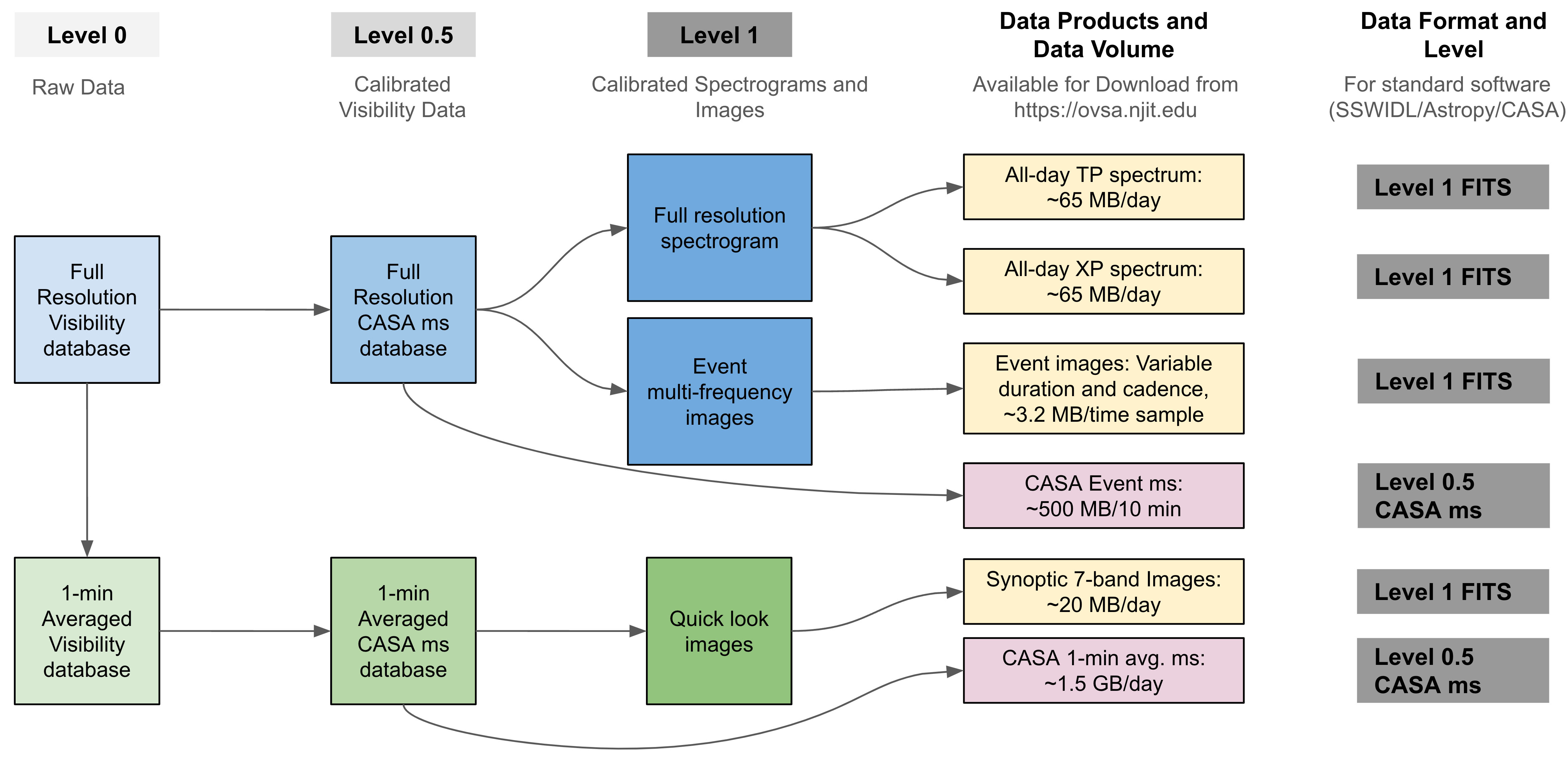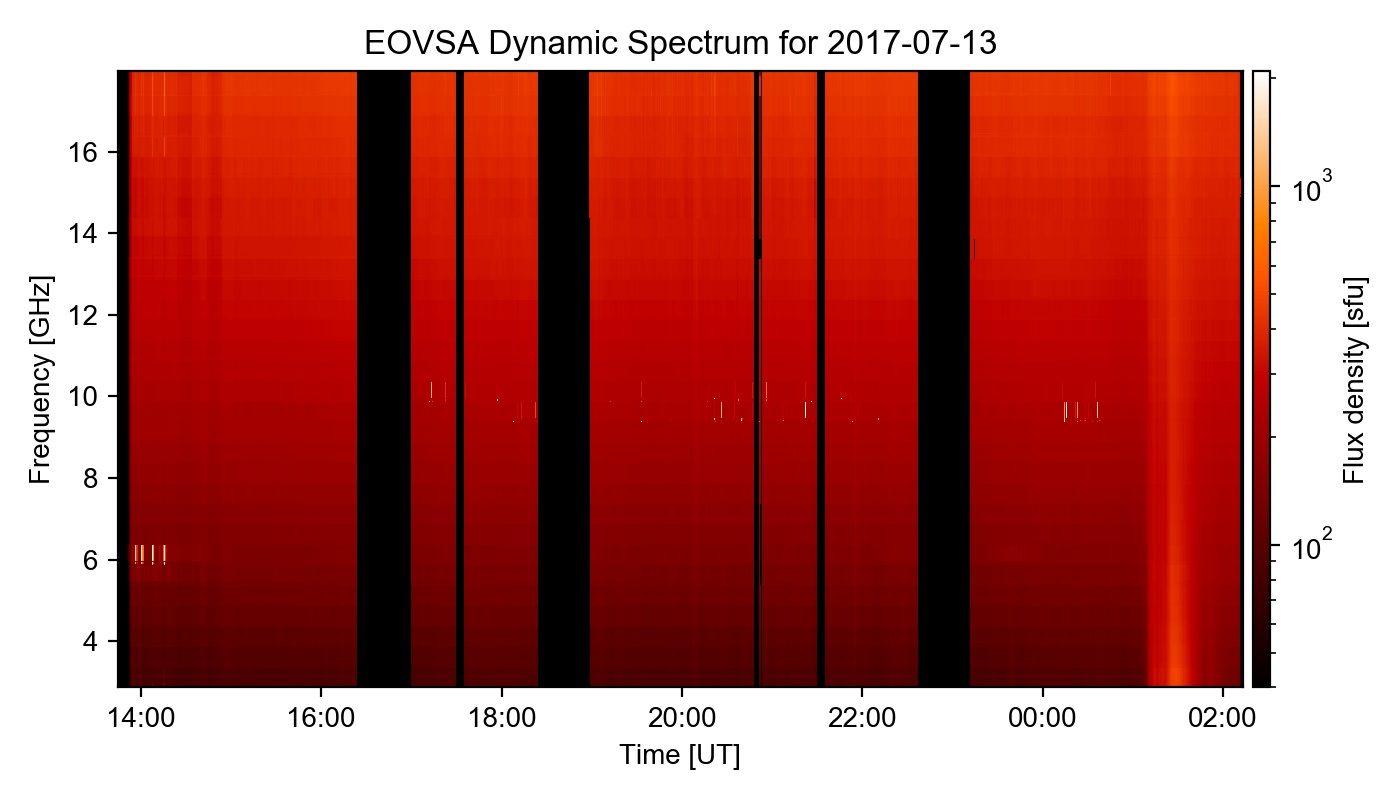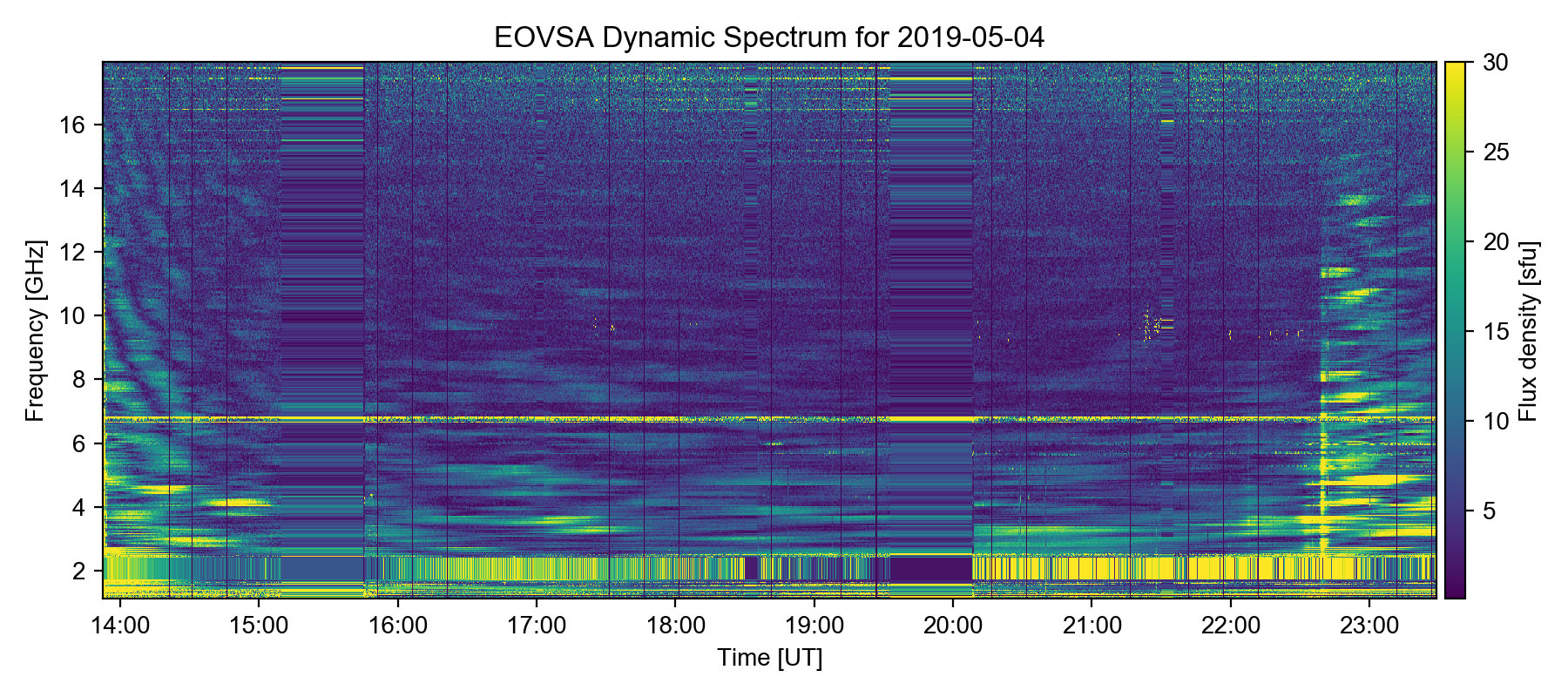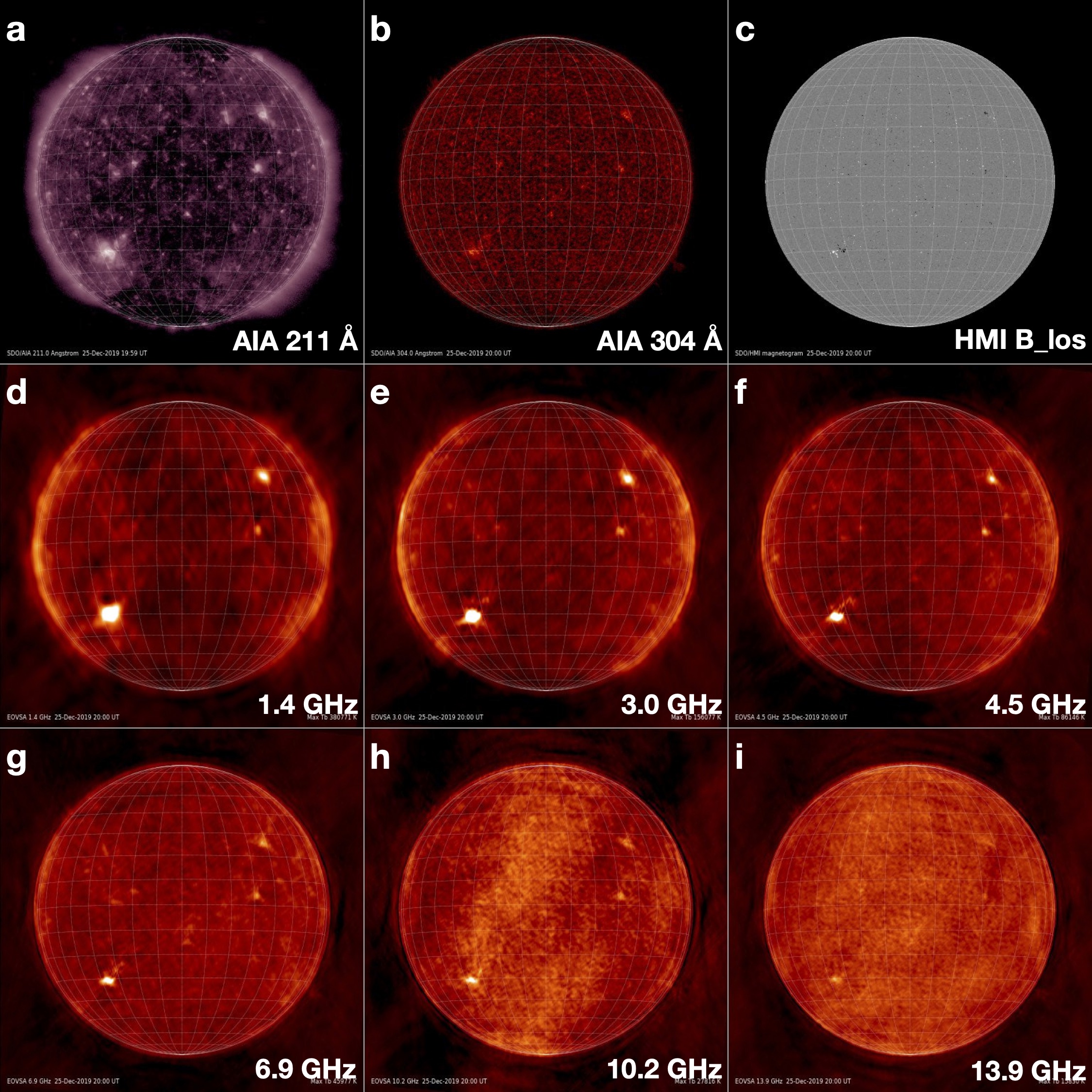EOVSA Data Products: Difference between revisions
No edit summary |
No edit summary |
||
| Line 2: | Line 2: | ||
[[File:pipeline_flowchart.jpg|center|600px]] | [[File:pipeline_flowchart.jpg|center|600px]] | ||
''' | '''Data Definition''' | ||
* Level 0: the raw visibility data from the instrument | * Level 0: the raw visibility data from the instrument | ||
* Level 1: the calibrated visibility data, which have all of the required content to produce Level 2 data products | * Level 1: the calibrated visibility data, which have all of the required content to produce Level 2 data products | ||
Revision as of 14:40, 23 March 2020
Welcome to the EOVSA data products documentation. EOVSA observes the full disk of the Sun at all times when the Sun is >10 degrees above the local horizon, which is season dependent and ranges from 7-12 hours duration centered on 20 UT. During January, coverage will be 16-24 UT daily, 7 days/week. EOVSA will provide microwave spectra and imaging at up to 451 frequencies between 1 and 18 GHz. We deliver the radio interferometry data in level 0-2.
Data Definition
- Level 0: the raw visibility data from the instrument
- Level 1: the calibrated visibility data, which have all of the required content to produce Level 2 data products
- Level 2: images and spectrogram data in standard FITS format
Full disk images at 6 selected frequency bands centered at 1.4, 3.0, 4.5, 6.8, 10.2, and 13.9 GHz will be provided once per day, calibrated in brightness temperature. Total power full-Sun-integrated spectrograms calibrated in solar flux units will be provided at 451 frequencies and 1 s time resolution. Similar cross-power spectrograms will also be provided, which have much better sensitivity to weak bursts. EOVSA will also provide quick look images and spatially-resolved microwave spectra of any bursts that are identified in the cross-power spectra. Such spatially-resolved spectra can be analyzed to provide quantitative diagnostics of the magnetic field, plasma, and particle energy parameters in the burst source.
All-day TP spectrum
The all-day TP spectrum provides a daily dynamic spectrum of the sun-integrated flux in the broad frequency range 1-18 GHz at up to 451 science frequency channels with a cadence of 1 s.
All-day XP spectrum
The all-day XP spectrum provides a daily dynamic spectrum of mean flux from baselines with "intermediate" lengths in the broad frequency range 1-18 GHz at up to 451 science frequency channels with a cadence of 1 s.
Synoptic 7-band Images
The synoptic 7-band images provide full-disk images at 7 standard frequency ranges integrated over an entire day.



